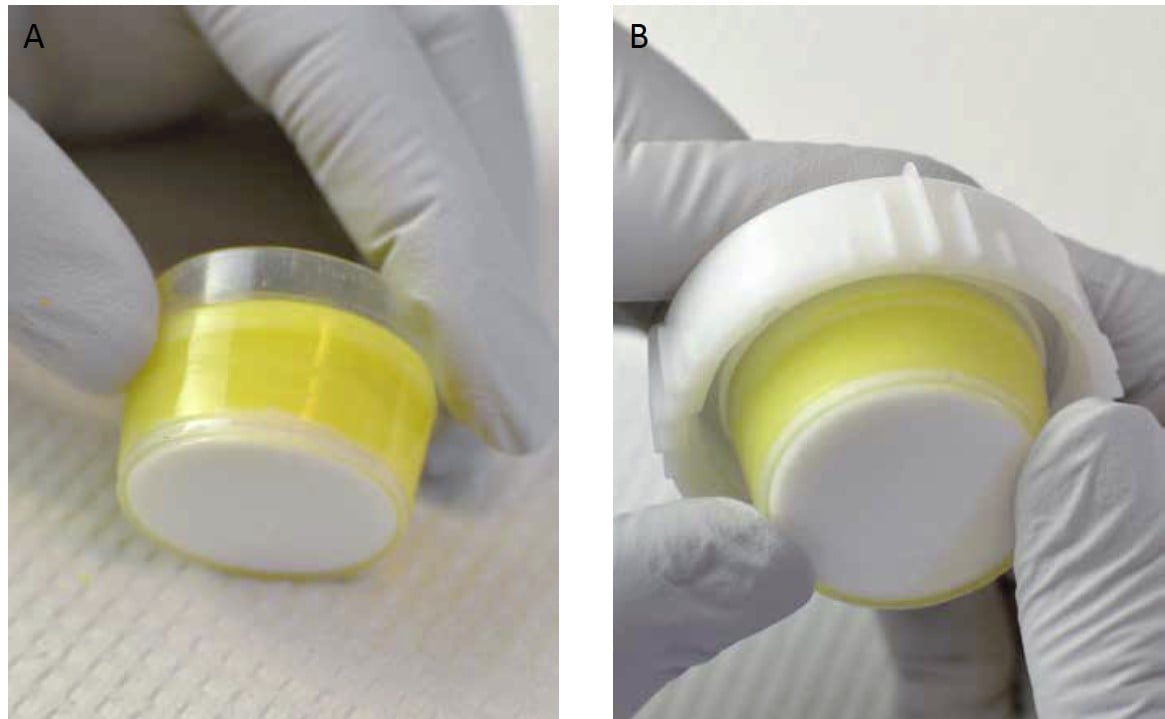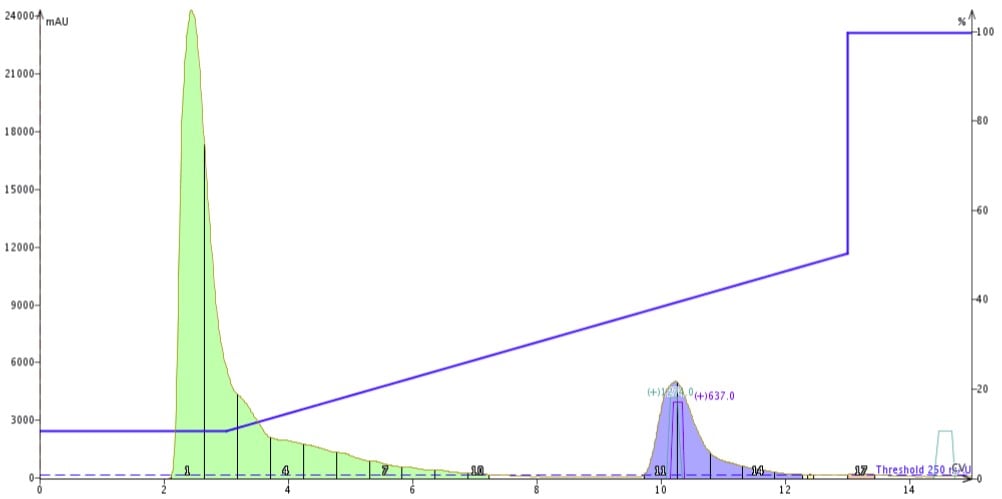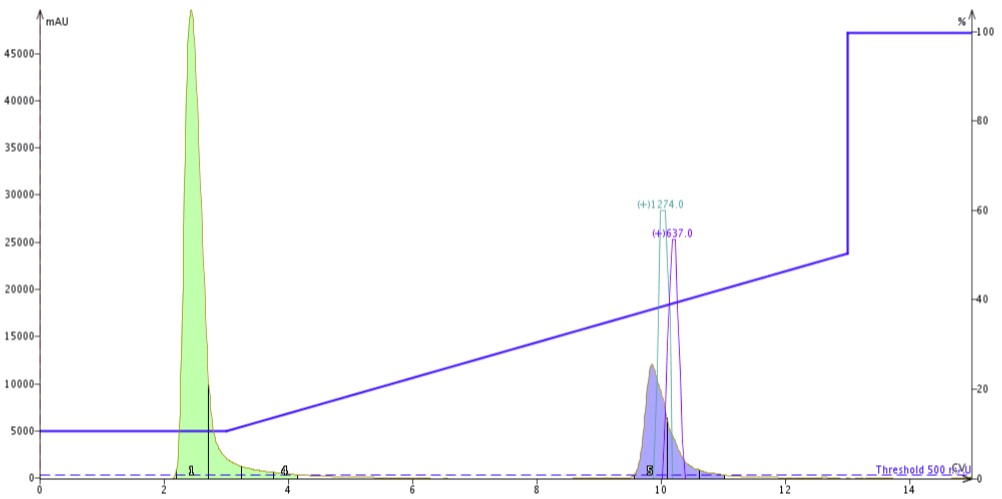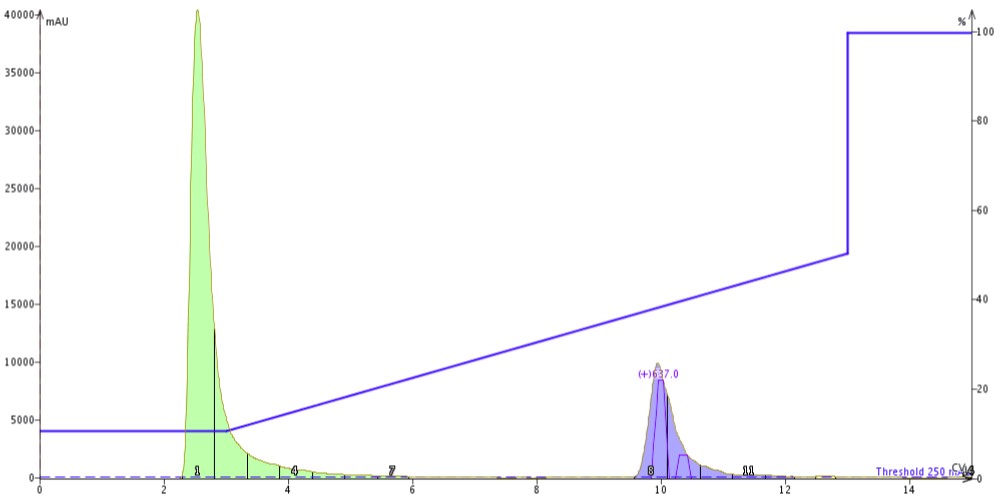More often than not and as a peptide chemist, I am asking myself in which solvent should I dissolve my peptide prior to purification by flash chromatography. I have rarely considered an alternative to the standard liquid injection. However, dry loading is a common technique used by organic chemists prior to their normal-phase purification efforts, especially if the compound isn’t particularly soluble in the mobile phase solvents. To the best of my knowledge, dry loading is not commonly used for peptide purifications.
Immediately, questions come to mind as I attempt this new loading technique. Will my peak shape change if load additional material? Does the stationary phase need to be equilibrated before use? What solvent should I use to load my crude sample? How will my sample recovery be affected? I will address a few of these questions in today’s discussion.
A Samplet® cartridge is a small vessel packed with stationary phase held in place by a porous frit, Figure 1A. These vessels can then be “loaded” with sample, typically dissolved in a volatile solvent at a very high concentration which will then evaporate, leaving the crude sample associated with the stationary phase. The Samplet® cartridge is then placed inside the flash cartridge for sample purification, Figure 1B.

Figure 1: Samplet® cartridge containing stationary phase loaded with crude sample (yellow); 1A. Samplet® cartridge mounted in a SNAP cartridge cap immediately prior to placement on the cartridge for sample purification, 1B.
As I started to explore the utility of Samplet® cartridges for peptide purification, I first wanted to understand the properties of the stationary phase with which it is packed.
Reversed-phased cartridges should be conditioned prior to use in purification. This conditioning process involves wetting the stationary phase first with neat acetonitrile, then in a secondary step, conditioned with 50:50 aqueous acetonitrile before equilibration with the initial conditions set for the purification run. If conditioning is not executed prior to purification, the chromatography will assuredly be impacted in a very negative way. However, the Samplet® cartridge, although it is packed with the exact same stationary phase, is not intended to undergo this same process.
To explore this question, I first needed a baseline. I conditioned my Biotage® SNAP Bio C18 cartridge as described above and injected about 40 mg of my favorite 11-amino acid peptide dissolved in DMSO and completed the purification using my Biotage® Isolera Dalton 2000 (Flash LC-MS system), Figure 2.

Figure 2: Purification of ACP modified with an Alloc protected lysine using a SNAP Bio C18 cartridge on a Biotage® Isolera Dalton 2000. The sample was dissolved in 200 uL of DMSO and directly injected on the cartridge for purification.
The outcome was just what I expected (and have seen over and over for this peptide). The only notable difference I observed is the width of the peptide peak which elutes at about 10 min. I will admit, I had failed to replace the insert that typically is in place for a standard liquid injection. Without this insert in place, the sample is delivered into a space that contains approximately 1 mL of liquid, causing significant sample dilution and subsequent peak broadening over the course of the purification.
Next, I wanted to “wet” the Samplet® cartridge in low organic conditions prior to injecting my sample for purification. I inserted the SNAP C18 Samplet® cartridge in the same SNAP Bio C18 cartridge, equilibrated them in 10% aqueous acetonitrile, then injected the peptide dissolved in DMSO, Figure 3.

Figure 3: Purification of ACP modified with an Alloc protected lysine using a SNAP Bio C18 cartridge on a Biotage Isolera Dalton 2000. The sample was dissolved in 200 uL of DMSO and injected onto a SNAP C18 Samplet cartridge equilibrated in 10% aqueous acetonitrile.
The peptide peak is definitely narrower and exhibits less tailing than the previous injection, much more in line with what I expect to see for this peptide. Importantly, the retention time has not changed with the addition of the samplet. While this observation may not seem significant, it is important to note that the Samplet® cartridge increases the stationary phase volume by 10% and is the first material that the peptide comes into contact with and could potentially influence the chromatography and recovery significantly.
Finally, I wanted to go to the extreme and load material onto a completely dry Samplet cartridge immediately prior to use. For this, I equilibrated my SNAP Bio C18 cartridge in the mobile phase starting conditions, inserted the DRY Samplet® cartridge into the flash cartridge and loaded my peptide sample dissolved in DMSO, Figure 4.

Figure 4: Purification of ACP modified with an Alloc protected lysine using a SNAP Bio C18 cartridge on a Biotage Isolera Dalton 2000. The sample was dissolved in 200 uL of DMSO, loaded onto a dry SNAP Bio C18 samplet and positioned on the cartridge for equilibration and purification.
Generally speaking, the peptide peak shape is well formed and narrow as I have come to expect for this peptide. As above, the retention time is also maintained using this strategy. I do observe some additional tailing with this chromatography that was not evident for the previous injection.
It is important to confess that this is not a true dry load as I mentioned above. Each of these samples was fully solvated in DMSO and then injected onto the Samplet cartridge with no time allowed for drying– not that the DMSO would have dried any way. There will certainly be future discussions regarding truely dry loading peptide samples for purification. Taken together though, these results suggest that when using a Samplet® cartridge as part of the purification, proper conditioning is not required. This data gives confidence that the presence of the Samplet® cartridge and its wetting state will not adversely affect the desired chromatography. In the future, I will likely start using the Samplet® cartridge as a pseudo-guard column, especially for peptide samples that are not fully solubilized prior to purification.
Do you want to learn more about using flash chromatography to purify your peptide samples? Click the link for tips and tricks to improve your sample purity.

 Organic Workflow
Organic Workflow Peptide Workflow
Peptide Workflow Scale-Up Flash Purification
Scale-Up Flash Purification  Sample Preparation
Sample Preparation Biomolecule Purification
Biomolecule Purification Oligo synthesis
Oligo synthesis Scavengers and Reagents
Scavengers and Reagents Service & Support
Service & Support Accessories & Spare parts
Accessories & Spare parts Investors
Investors Reports & News
Reports & News The Share
The Share Corporate Governance
Corporate Governance Calendar
Calendar Sustainability
Sustainability Our Offering
Our Offering Our History
Our History Our Locations
Our Locations Leadership
Leadership